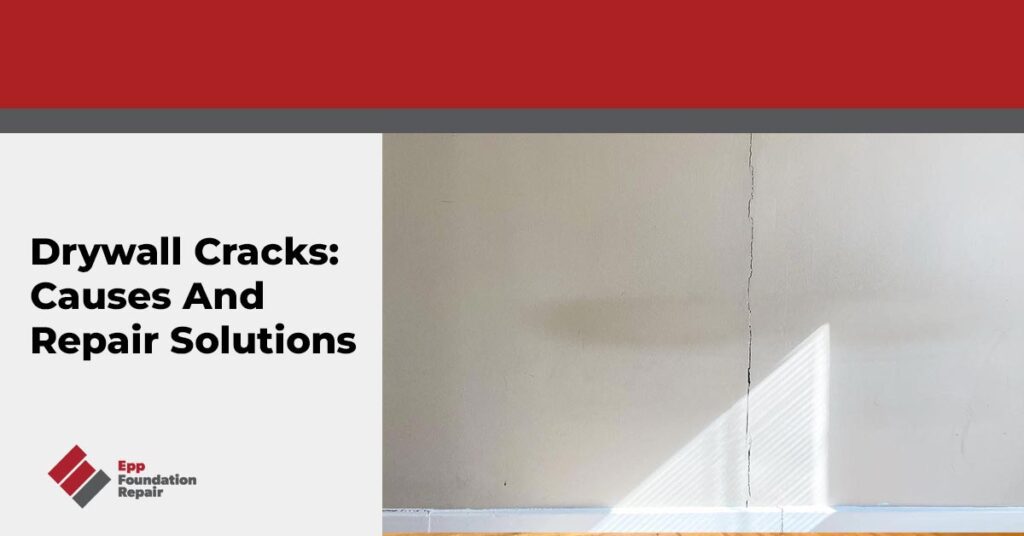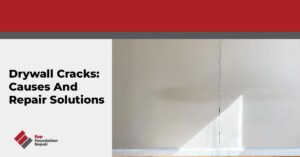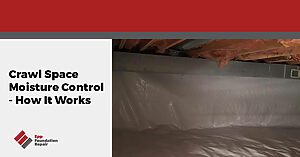Looking for information about drywall cracks? If so, you’ve landed on the right page. In this short article, we’re going to go over what drywall cracks are, what causes them, some possible repair solutions, and more.
What Are Drywall Cracks?
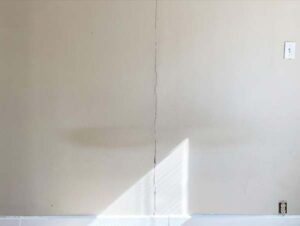
Drywall cracks refer to any visible break or split in the gypsum board that makes up a home’s interior walls and ceilings. Drywall cracks are common and caused by various factors, such as differential foundation settlement, temperature changes, or even poor installation techniques. While some hairline drywall cracks may be nothing to worry about, more significant cracks can indicate a foundation problem that needs to be addressed.
Drywall Cracks Allow Moisture and Pests To Enter Your Home
One of the main concerns with drywall cracks is that they can allow moisture and pests to enter the home. This can lead to costly repairs and health hazards like mold growth and pest infestations. Additionally, cracks in the drywall can compromise the home’s structural integrity, making it more susceptible to damage in the event of a seismic or weather-related event.
What Causes Drywall Cracks?
Drywall cracks can be attributed to a variety of factors, including the following:

- Differential foundation settlement – Differential foundation settlement is when a foundation settles into the ground unevenly. This puts a lot of stress on the foundation and can cause various problems, including drywall cracks. See the infographic below for a visual representation of differential settlement.
- New home – A newly built home will settle slightly into the ground after construction. This can cause small cracks in drywall.
- Moisture and temperature fluctuations – Extreme changes in temperature or moisture levels can cause drywall joints to expand and contract, leading to visible cracks.
- Improper installation – Improper drywall installation may include using the wrong type of drywall, using nails that are too long, or using too much (or too little) drywall mud.
- Plumbing leaks – If any moisture seeps into the drywall, the risk of cracks increases significantly due to the expansion and contraction of the material.
As a homeowner, you must be aware of these factors and take preventative measures to maintain your home’s drywall in top condition. This may include regular drywall inspection for signs of cracking, ensuring proper installation and handling, and addressing other issues – such as possible signs of differential settlement – as soon as they arise. By taking these steps, you can help maintain the integrity of your home’s foundation and prevent unsightly drywall cracking.
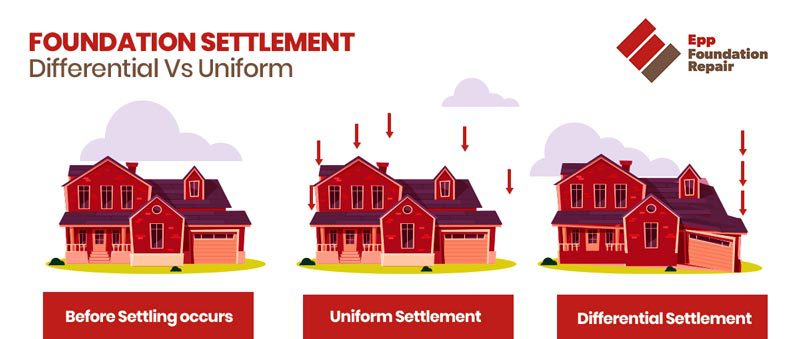
The Most Common Areas For Drywall Cracks
Drywall cracks can appear in various areas of your home, but there are certain regions where they are more commonly found. These areas include the following:
- The corners of windows, doors, ceilings, and walls. These spots are prone to movement and are structurally more vulnerable, leading to the formation of cracks over time.
- Areas where drywall panels are joined are another common area for drywall cracks. This is often caused by improper drywall mud application.
If you see large drywall cracks stretching across the drywall panels diagonally, contact a foundation repair contractor immediately because these cracks are usually caused by foundation movement.
It’s essential to address drywall cracks as soon as they appear to avoid more costly repairs in the future. Small cracks can be easily filled with a joint compound, but larger cracks caused by differential settlement will require attention from a professional foundation repair contractor.
If You See A Drywall Crack, Look Around For Signs Of A Foundation Problem
All homeowners should learn to spot subtle changes in their home’s foundation. Drywall cracks could indicate a much larger problem. Therefore, surveying the house for other signs of foundation problems is crucial.
Some of the signs to watch out for include the following:
- Wall, floor, and ceiling cracks
- Stair step cracks in brick or masonry
- Uneven floors
- Doors or windows that have become increasingly hard to open or close
- Chimneys or porches that lean away from the house
If you see any of the above or anything else that strikes you as suspicious, contact a foundation repair contractor right away and ask for an inspection.
When left unchecked, foundation problems can cause serious structural damage to your home and lead to even more expensive repairs. In other words, detecting foundation problems early means money saved. So, be vigilant.
Fixing Drywall Cracks
The chosen repair solution for fixing a drywall crack depends on what caused the crack. For most non-structural drywall cracks, a painter would be the appropriate person to seal and cover the cracks. Sometimes, a drywall contractor or a skilled handyman who can tape and mud joints may be needed.
Many products, such as mesh tape, patch kits, drywall mud, and caulking, can repair a non-structural drywall crack. Using a mesh tape product makes the crack less likely to appear again. Simply applying some drywall mud or spackle will not be very strong, and you may find that even the normal expansion and contraction from temperature fluctuations may be enough to cause another crack.
If the drywall crack is due to a more significant underlying issue, such as differential foundation settlement, you’ll need to consult a professional foundation repair contractor for more extensive repairs.
Preventing Cracks In Drywall
To prevent drywall cracks from occurring, homeowners can take several proactive measures. This includes ensuring that their home’s foundation is adequately supported and reinforced, maintaining a stable indoor temperature and humidity level, and using high-quality materials and techniques during installation. Regular inspections of the home’s drywall, particularly in high-risk areas such as corners and joints, can also help detect any developing issues.
If you’re concerned about drywall cracks in your home, contact us today to schedule an evaluation. Since 1994, we’ve helped clients in Lincoln, Omaha, Kearney, Southeastern Nebraska, Northwestern Missouri, and parts of Northeastern Kansas with foundation repair, basement waterproofing, crawl space encapsulation and concrete leveling for their homes.

